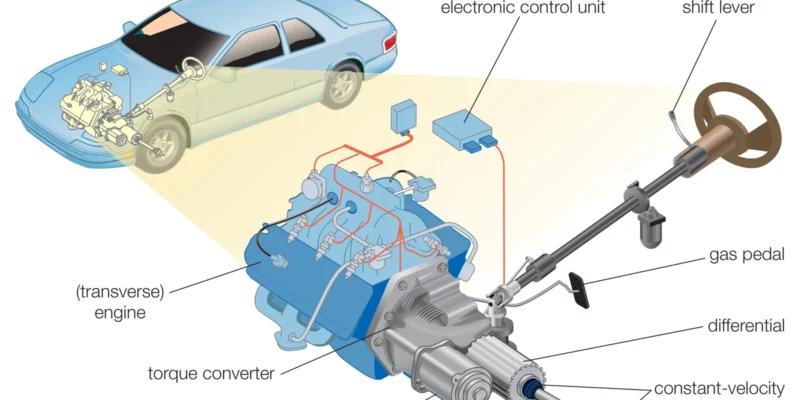
A transmission is a mechanical device that transfers power from an engine to the wheels of a vehicle. It allows the engine to operate at a constant speed while the vehicle is moving at different speeds. This is done by using a series of gears that change the speed and torque of the engine’s output.
Types of transmissions
There are two main types of transmissions: manual and automatic. Manual transmissions require the driver to shift gears manually, while automatic transmissions shift gears automatically.
Manual transmissions
Manual transmissions are the most common type of transmission in the world. They are relatively simple and inexpensive to build and maintain. However, they can be difficult to drive for some people, especially in stop-and-go traffic.
Automatic transmissions
Automatic transmissions are becoming increasingly popular, as they are more convenient and easier to drive than manual transmissions. Automatic transmissions use a torque converter to transfer power from the engine to the transmission. The torque converter is a fluid coupling that allows the engine and transmission to operate at different speeds.
Transmission problems
Transmissions can be prone to a number of problems, including:
- Low transmission fluid levels
- Worn or damaged gears
- Faulty solenoids
- Cracked or leaking transmission cases
Transmission maintenance
Transmissions should be regularly maintained to prevent problems. This includes:
- Changing the transmission fluid according to the manufacturer’s recommendations
- Checking the transmission fluid level regularly
- Inspecting the transmission for leaks
- Having the transmission serviced by a qualified mechanic at least once a year
Transmission repair
If a transmission does develop a problem, it may need to be repaired or replaced. The cost of transmission repair can vary depending on the severity of the problem. In some cases, it may be more cost-effective to replace the transmission than to repair it.
Transmission replacement
If a transmission needs to be replaced, it is important to choose a quality replacement transmission. A poorly made replacement transmission can lead to further problems down the road. It is also important to have the transmission installed by a qualified mechanic.
Conclusion
Transmissions are an important part of any vehicle. They allow the engine to operate at a constant speed while the vehicle is moving at different speeds. Transmissions can be prone to problems, but they can be prevented with regular maintenance. If a transmission does develop a problem, it is important to have it repaired or replaced as soon as possible.

